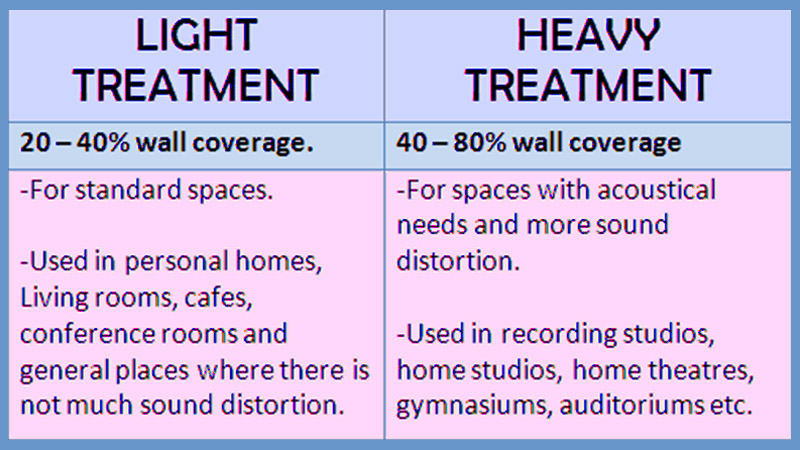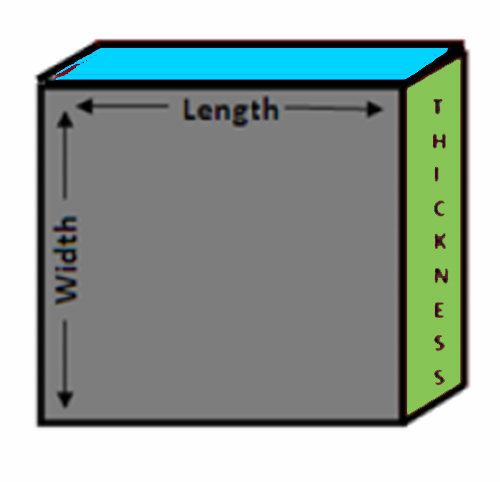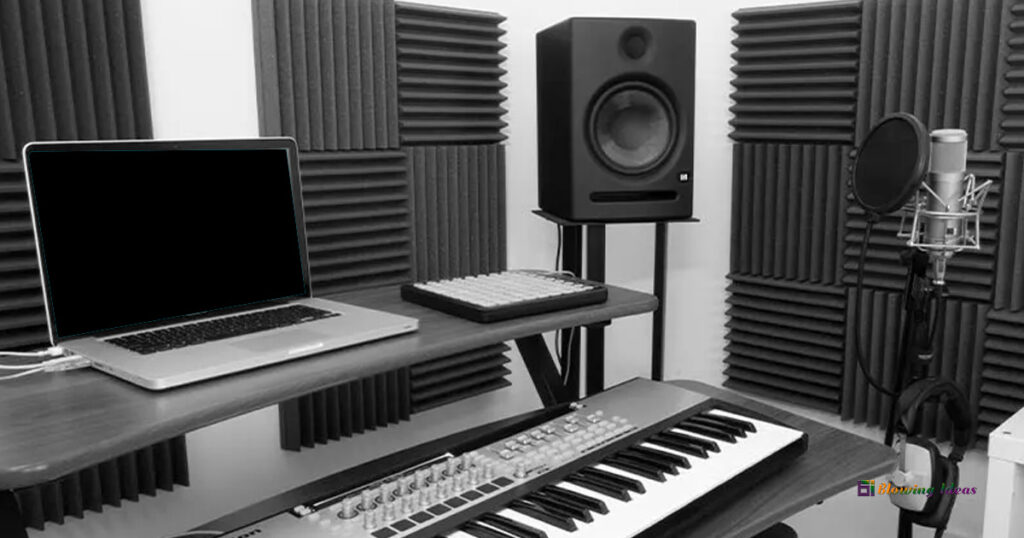How Much Acoustic Foam Do I Need? If you’re one of the people who have chosen to do acoustic treatment with acoustic foam at your home but don’t know how much acoustic foam you’ll need? Don’t worry, I’m confident you’ll find the answer to this question before the end of this post.
Have you ever been to a café, restaurant, or other location with the excellent sound quality? It shouldn’t be too loud or too quiet. Isn’t it nice to work in such an environment? What if I told you that you may create a similar environment in your home by utilising Acoustic foam?

Acoustic foam is an open-celled foam consisting of polyurethane and melamine with the primary objective of reducing echoes and reverberations. Acoustic foam is available in a variety of forms, shapes, sizes, and colours. The acoustic foam absorbs sound based on its thickness, kind, and NRC rating.
Even if you know everything there is to know about acoustic foam, you won’t be able to make full use of it if you don’t know how much to use!
How Much Acoustic Foam Do I Need
“Too much of anything is useless,” as the saying goes. Similarly, if you don’t know how much acoustic foam to use on your wall, you’ll end up using too much foam, which can deaden the natural sound quality of the room.
You’re probably confused about the proportion of wall coverage you need to complete now, right?
Let’s have a look at that as well.
It is essential to always follow the thumb guidelines. The typical rule is that you should cover 25-50 percent of your wall. This, however, is not always the case. There are two sorts of acoustical treatments based on the coverage of your wall.

The first is Light treatment, which is used in typical settings where sound distortion is minimal, and the second is Heavy treatment, which is utilised in areas with more acoustical needs.
These two treatments aid in the creation of a high-quality acoustic environment. This can be difficult for novices and, in some cases, seasoned individuals. How much acoustic foam will I require? The answer to this question is dependent on a number of things. These elements are as follows:
1. The Dimensions and Shape of Your Room
This is the first and most important thing to examine while trying to discover a solution to our query. The size and design of the room are important considerations. The rooms are intended to meet the individual’s needs and expectations. As a result, each house has a unique set of rooms.
Large rooms produce more echo and reverberations than small rooms because the sound waves have more time to travel and hence are amplified more.
As a result, additional Acoustic foam panels will be required to cover large spaces. Smaller rooms will require fewer foam panels than larger spaces. The height of the ceiling also plays a role in enhancing the echo.
2. Surface Material
You may be aware that sound waves bounce back between flat and hard surfaces, resulting in an echo. Certain dwellings’ walls are thin, allowing sound to easily move in and out.
As a result, these walls must be treated first and require a greater quantity of acoustic foam than larger walls. These types of walls must also be covered with thicker and denser acoustic foam.
Acoustic foam significantly lowers echoes and reverberations. As a result, it decreases the overall sound of a room.
However, in the event of thin walls, acoustic foam is insufficient to minimise overall room noise. It is also less effective than Rockwool insulation. So make your plans appropriately.
3. Purpose of The Room
Among all of the factors, this is the most significant. The amount of acoustic foam required will be determined by the purpose of your space. If you wish to use acoustic foam in your recording studio, the main goal will always be to reduce all unneeded echoes and reverberations.
As a result, you’ll need to cover a large amount of space with acoustic foam. You will have to choose the Heavy treatment option. As a result, you’ll need more foam panels. Similarly, good acoustic foam placement is critical. Acoustic foam placement will save not only the amount of foam required but also your time and work.
If, on the other hand, your purpose is to keep outside noises from coming inside or to keep internal noises from coming out, you won’t need as many foam panels as a recording studio. As a result, in such instances, you must choose Light treatment.
You now understand the elements that impact the amount of acoustic foam required. Let us now return to our main theme.
How much Acoustic foam do I need?
To begin with, a room is made up of walls, ceilings, and flooring. As a result, you can use foam panels on each wall and the ceiling.
Follow these procedures to determine how much acoustic foam you need on your walls:
A. Determine the wall’s area:
To calculate the area of your wall, you must first measure its length and height. You may be perplexed by the distinction between width and height, therefore in the instance of a rectangular wall, the height and width would be the same.
Let me illustrate this with a diagram:

As you can see in the figure, the blue line represents the length of your wall, the green line represents the width of your wall, and the orange line represents the height of your wall.
In the instance of a square wall, the height and length will be the same.
Now, using a measuring tape, determine the length and width of your wall in feet. Then double the length and width of your wall to find its area.
Assume your wall is 20 feet long and 15 feet wide. As a result, the area of your wall would be 20*15=300sq ft.
Now that you’ve calculated the area of your wall, you’ll need to calculate the area of your foam panel in the following step.
B. Calculate The Area Of Your Foam Panel:
Now that you’ve determined the size of your foam panel, you must determine the size of your wall.
Assume 2ft2ft foam panels can be utilised on a small or average-sized wall. However, if your wall is too huge, you’ll need to decide on the size of the foam panel and go for larger foam panels.
In this case, we’ll assume you have a 2ft2ft foam panel. As a result, its area will be 2ft2ft=4sq ft. It means a single 2ft2ft foam panel would cover a 4 sqft wall surface.
If you don’t know the dimensions of the foam panel, simply measure the length and width of the panel with a measuring tape. The length of the foam panel is then multiplied by the breadth of the foam panel.

The width and length of the foam panel are depicted in the above figure. The thickness of the foam is indicated by the highlighted part on the right side and upper side of the diagram. To achieve the best effects, the foam panel should be at least 4 inches thick.
You now have measurements for both the area of the wall and the area of your foam panel.
We will now use a simple mathematical calculation to determine how much acoustic foam I require.
Take the following measurements:
- THE SIZE OF YOUR WALL – 300 SQ FT.
- AREA OF YOUR FOAM PANEL – 4 SQ FT (We’re thinking of a 2ft*2ft foam panel, hence its area is 4 sq ft)
Now, the basic rule of thumb is that if you want to undertake the light treatment, you should cover 25-40% of your wall.
Consider the following scenario: you need to cover 40% of your wall. Let’s see how much 2ft*2ft acoustic foam you’ll need to cover 40% of your wall.
The 40% size of your wall will be 120 SQ FT., i.e. (300 x 40% = 120 sq. ft.)
Where 300 denotes the size of our wall
The preceding math shows that you will need to cover a 120 sq. ft. area of your wall.
Formula = How much of your wall must be covered/Area of your foam panel
- 120 sqft/4 sqft
- 30 foam panels
As a result, you needed 30 foam panels for each wall.
Where: How much of your wall do you need to cover? It might be 40 percent, 30 percent, 50 percent, or 80 percent of your wall, depending on your needs/purpose. We are assuming 40% here, therefore the estimate will be based on that.
This is how you may use a simple formula to determine how many foam panels you’ll need for your wall.
Note: That’s how you can figure out how many foam panels you’ll need for a wall. We know that a room is made up of walls and ceilings. As a result, if you want to utilise acoustic foam throughout your entire room, you’ll need to measure each wall as well as the ceiling, and then use the same process to calculate the total number of foam panels that you’ll want.
The number of acoustic panels you require will also be determined by your budget. As a result, organise your project accordingly.
Also, while selecting acoustic foam, make sure that it has a high NRC value and that it is thick and dense.
I attempted to clarify “How much Acoustic foam do I need?” as simply as possible. I hope all of your concerns have been addressed!



